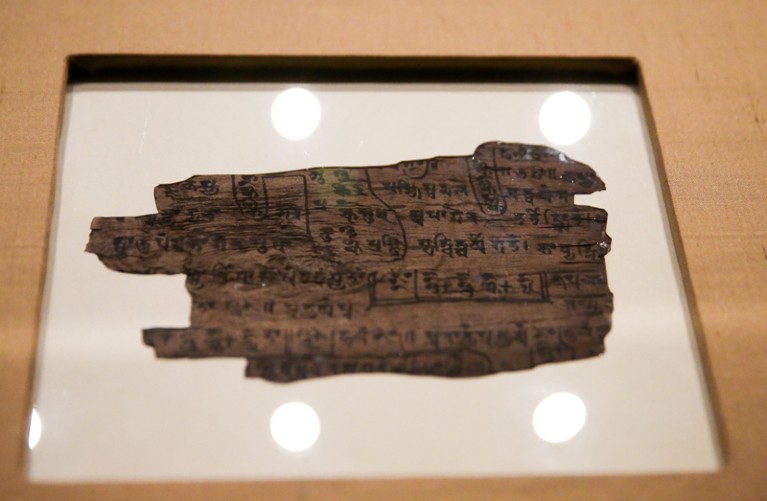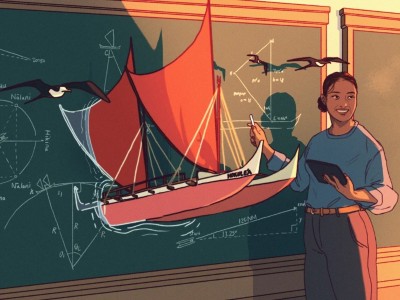[ad_1]

The Bakhshali manuscript was found in 1881 around 20 kilometres from the site of an ancient Buddhist monastery in what is now Pakistan.Credit: Dinendra Haria/Alamy
What’s the point of decolonizing mathematics? This is one of the questions being asked in response to the international decolonizing movement, through which university faculty members and students are exploring the contributions that people from many cultures have made to the story of different research fields.
Such questions have long been central to the study of science’s history, but not its teaching. Efforts to address them include works such as maths historian George Joseph’s book The Crest of the Peacock: Non-European Roots of Mathematics (1991) and the ongoing encyclopaedic series Science Across Cultures, edited by Helaine Selin. But there’s been pushback, too, as interest in decolonization has mushroomed in many parts of the world. The debate on decolonizing mathematics is explored in the latest instalment of our series on decolonizing science.
Charting a course to make maths truly universal
Some researchers are concerned that the decolonization movement politicizes universities and restricts academic freedom. One common argument is that decolonization is irrelevant to the practice of mathematics: the solution to a quadratic equation doesn’t, after all, depend on a mathematician’s identity or protected characteristics.
In fact, such questions reprise aspects of an older, more academically focused debate on whether — or to what extent — scientific knowledge is socially constructed. What is known as pure mathematics is a case in point. Algebra, the method of representing problems in mathematical form, is often taught as a collection of rules to memorize and practise, described using abstract symbols such as x and y. But it was not always so.
The word ‘algebra’ is a contraction of the name of a ninth-century Arabic text, al-Kitāb al-mukhtas.ar fi h.isāb al-jabr wa’l-muqābala (The Compendious Book on Calculation by Completion and Balancing), written by Muh.ammad ibn Mūsā al-Khwārizmī, who was born in about ad 780. Al-Khwārizmī was an astronomer, cartographer and mathematician working in Baghdad, in what is now Iraq, during Islam’s imperial era. He wrote the book as a kind of public service, to help people work out everyday problems, such as what they were entitled to in inheritance or how much they owed in tax. The text includes worked examples and uses words instead of symbols, along with visual and geometric techniques to make solving problems easier.
Imperialism’s long shadow: the UK universities grappling with a colonial past
Mathematicians from Europe, particularly Fibonacci (born in Italy in around 1170), came across these ideas while travelling in Arabic-speaking countries and helped to extend their geographical reach by presenting them in Latin. Chief among the concepts Fibonacci helped to introduce to Europe was the Indo-Arabic system of numerals we use today. Because many original Arabic texts (including Al-Khwārizmī’s algebra book) were later lost, many ideas that originated in the Middle East later found their way back to the region through translations of these Latin texts.
Al-Khwārizmī refers to Indian numerals to acknowledge earlier sources for his methods. The only surviving example of a potential source of this type is the Bakhshali manuscript, a collection of some 70 ‘pages’ of mathematics written on birch-tree bark in a form of Sanskrit. The manuscript has been dated to as early as the third or fourth century ad and is now stored at the Bodleian Libraries at the University of Oxford, UK. It is regarded as the oldest surviving text that uses the concept of zero (represented by a dot). Even today, numbers written in Arabic use a dot to denote zero.
This manuscript also contains descriptions of what would have been everyday mathematical problems at the time, and rules for how to solve them. Among these are linear equations, quadratic equations and means of finding the square roots of numbers. Like Al-Khwārizmī, the unknown writer describes equations using words.
So, to answer the question: what’s the point of decolonizing mathematics? It is so we can get a more accurate picture of the subject’s origins and development, and the variety of problems it helps to solve. Decolonization shows that the roots of discovery and invention are shared between many world cultures, which can be particularly empowering for people from historically marginalized groups. Decolonizing science is the antidote to exceptionalism, the idea that any single culture or civilization possessed special abilities in advancing science.
The last words must go to the guest editors of Nature’s special issue on racism, published in October. “It is so important for science curricula, research and academic spaces to go through decolonization processes. These are not political or ideological acts, but part of science itself — an example of science’s self-correcting mechanism in the pursuit of truth.”
[ad_2]
Source link



